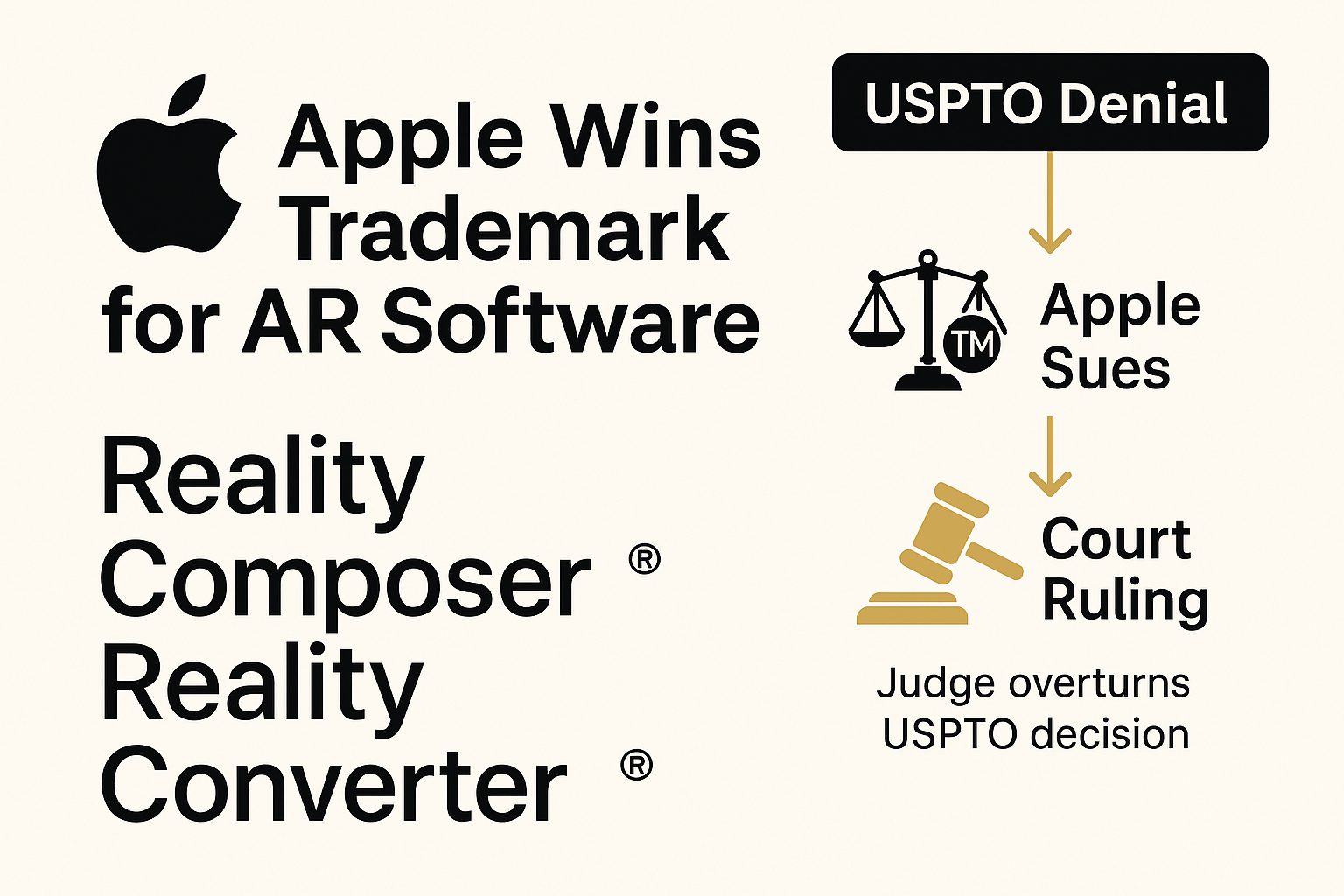Your cart is currently empty!
Tag: USPTO

Specimens 101: The Most Common USPTO Refusal—and How to Avoid It
Most trademark applications fail for one simple reason: the specimen doesn’t prove real-world use. A specimen is your evidence—what the customer sees when they meet your brand in the wild. Get it right, and your filing moves. Get it wrong, and you lose time and money. What the USPTO Wants For goods: the mark on…

Apple Wins Court Ruling—‘Reality Composer’ & ‘Reality Converter’ Trademarked
In a major win for Apple, a federal judge has ordered the USPTO to grant federal trademarks for its augmented reality development tools—“Reality Composer” and “Reality Converter.” The decision may reshape how tech companies establish brand distinctiveness in emerging software categories. 🧑⚖️ The Legal Backdrop Apple initially applied to register the marks in 2023. The…

